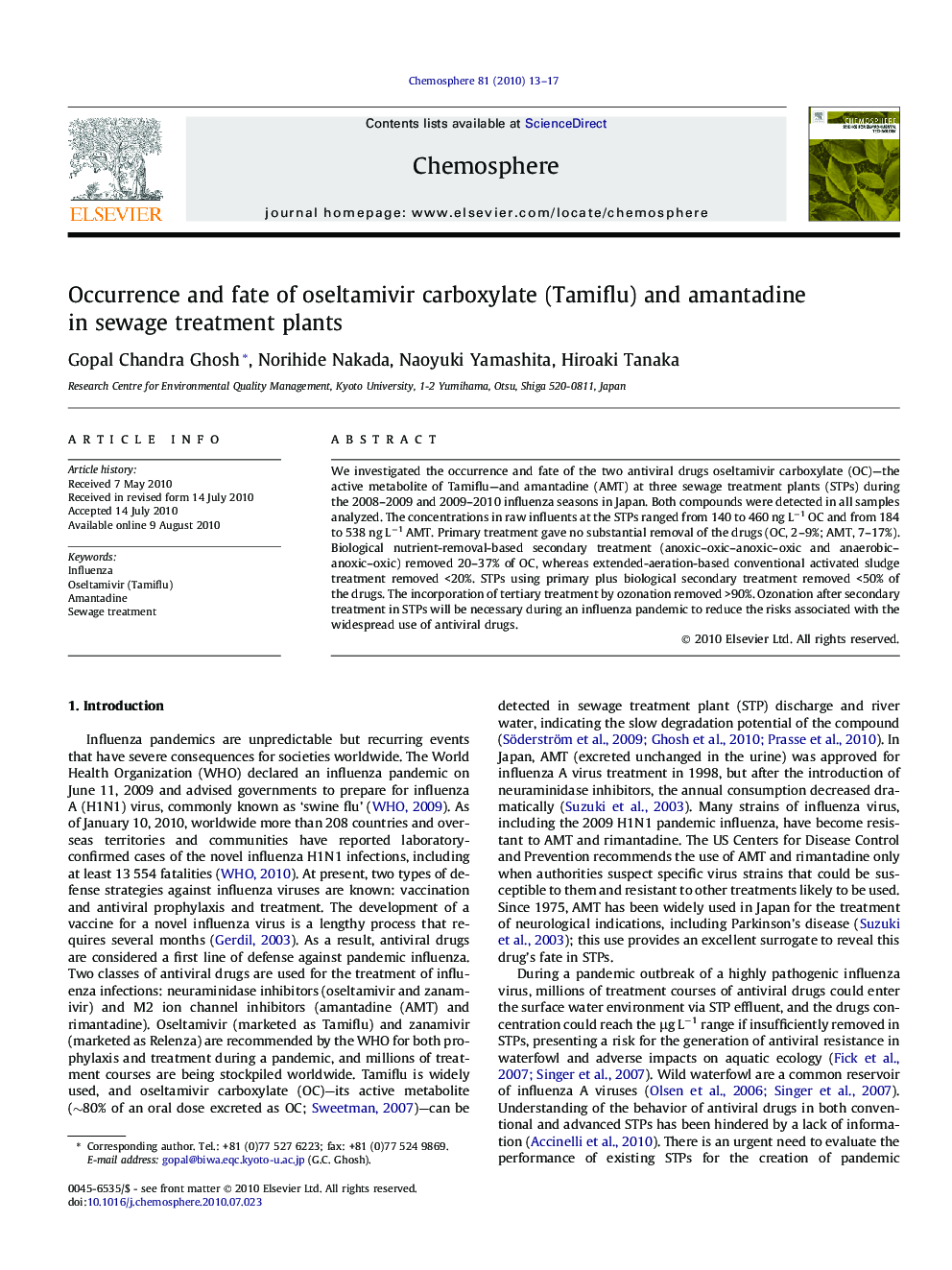| Article ID | Journal | Published Year | Pages | File Type |
|---|---|---|---|---|
| 4411911 | Chemosphere | 2010 | 5 Pages |
We investigated the occurrence and fate of the two antiviral drugs oseltamivir carboxylate (OC)—the active metabolite of Tamiflu—and amantadine (AMT) at three sewage treatment plants (STPs) during the 2008–2009 and 2009–2010 influenza seasons in Japan. Both compounds were detected in all samples analyzed. The concentrations in raw influents at the STPs ranged from 140 to 460 ng L−1 OC and from 184 to 538 ng L−1 AMT. Primary treatment gave no substantial removal of the drugs (OC, 2–9%; AMT, 7–17%). Biological nutrient-removal-based secondary treatment (anoxic–oxic–anoxic–oxic and anaerobic–anoxic–oxic) removed 20–37% of OC, whereas extended-aeration-based conventional activated sludge treatment removed <20%. STPs using primary plus biological secondary treatment removed <50% of the drugs. The incorporation of tertiary treatment by ozonation removed >90%. Ozonation after secondary treatment in STPs will be necessary during an influenza pandemic to reduce the risks associated with the widespread use of antiviral drugs.
